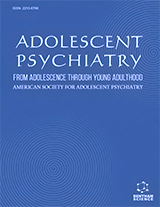Abstract
Background: Factitious Disorder is a condition included among psychiatric disorders, where symptoms are intentionally produced to seek medical attention. Its epidemiology, treatment, and outcome are largely unknown.
Objective: To increase knowledge of the condition, we discuss a pediatric case where the patient feigned neuropsychiatric symptoms.
Methods: A 15-year-old female adolescent presented with neuropsychiatric symptoms suggestive of rare conditions such as Delusional Misidentification Syndrome (i.e., Capgras and Fregoli syndromes) and Developmental Prosopagnosia as well as epileptic seizures.
Results: When Delusional Misidentification Syndrome was suspected, she was treated with Risperidone. Due to suboptimal response, Alprazolam and Sertraline were added and then Risperidone was cross-titrated to Haloperidol. The condition severity led to her admission to an inpatient Child and Adolescent Neuropsychiatry Unit. MRI scan and electroencephalographic recording were normal. The self- and parent-reported psychological assessment indicated several psychiatric symptoms. Instead, the clinician-administered Minnesota Multiphasic Personality Inventory-Adolescent and Structured Inventory of Malingered Symptomatology suggested a fake-bad profile and neuropsychiatric symptom simulation. Along with evidence of incongruent symptoms between the patient’s interviews, such investigations led to the diagnosis of Factitious Disorder. Psychopharmacological treatment was discontinued, and psychological support was offered to the patient and her parents.
Conclusion: Increasing knowledge about Factitious Disorder is needed.
Keywords: Munchausen syndrome, malingering, confrontation, psychopharmacology, psychotherapy, child and adolescent neuropsychiatry, intelligence.
Graphical Abstract
[http://dx.doi.org/10.1016/S0140-6736(51)92313-6] [PMID: 14805062]
[PMID: 19295948]
[http://dx.doi.org/10.1016/S0140-6736(13)62186-8] [PMID: 24612861]
[http://dx.doi.org/10.1177/1359104521996742] [PMID: 33624517]
[http://dx.doi.org/10.1002/pnp.533]
[http://dx.doi.org/10.1016/S0163-8343(03)00061-6] [PMID: 12972228]
[http://dx.doi.org/10.1016/j.psychres.2014.03.034] [PMID: 24745468]
[http://dx.doi.org/10.1016/j.genhosppsych.2016.05.002] [PMID: 27302720]
[http://dx.doi.org/10.1176/appi.ajp.160.6.1163] [PMID: 12777276]
[http://dx.doi.org/10.1002/jhm.2268] [PMID: 25274180]
[http://dx.doi.org/10.1002/ccr3.2254] [PMID: 31428370]
[http://dx.doi.org/10.2147/PRBM.S153377] [PMID: 29270035]
[http://dx.doi.org/10.7326/0003-4819-99-2-240] [PMID: 6881779]
[http://dx.doi.org/10.1016/S0033-3182(90)72133-0] [PMID: 2247566]
[http://dx.doi.org/10.1111/j.2044-8341.1983.tb01532.x] [PMID: 6838782]
[http://dx.doi.org/10.1097/00005792-197609000-00003] [PMID: 957998]
[http://dx.doi.org/10.1097/00005792-196102000-00001] [PMID: 13734791]
[http://dx.doi.org/10.1136/jnnp.48.8.826] [PMID: 4031935]
[http://dx.doi.org/10.7326/0003-4819-108-2-252] [PMID: 3277509]
[http://dx.doi.org/10.1159/000288910] [PMID: 7984774]
[http://dx.doi.org/10.1159/000288911] [PMID: 7984759]
[http://dx.doi.org/10.3233/NRE-1997-8305] [PMID: 24526047]
[http://dx.doi.org/10.1054/jhsb.2000.0503] [PMID: 11560421]
[http://dx.doi.org/10.1016/j.genhosppsych.2016.05.002] [PMID: 12380419]
[http://dx.doi.org/10.1037/0002-9432.76.1.31] [PMID: 16569124]
[http://dx.doi.org/10.7759/cureus.1348] [PMID: 28979830]
[http://dx.doi.org/10.1186/1710-1492-9-36] [PMID: 24341706]
[http://dx.doi.org/10.1016/j.psym.2014.05.013] [PMID: 25262044]
[http://dx.doi.org/10.1590/s1679-45082017md3746] [PMID: 29364370]
[http://dx.doi.org/10.1159/000126072] [PMID: 18418027]
[http://dx.doi.org/10.1186/s12888-021-03582-8] [PMID: 34814866]
[http://dx.doi.org/10.1080/09540261.2020.1756625] [PMID: 32378427]
[http://dx.doi.org/10.12688/f1000research.18492.1] [PMID: 31231507]
[PMID: 9213290]
[http://dx.doi.org/10.1207/s15327752jpa5104_2] [PMID: 3681637]
[http://dx.doi.org/10.1207/s15327752jpa6503_3] [PMID: 16367708]
[http://dx.doi.org/10.1177/1073191102009001008] [PMID: 11911236]
[http://dx.doi.org/10.1207/s15327752jpa7001_7] [PMID: 9615426]
[http://dx.doi.org/10.3389/fpsyt.2018.00249] [PMID: 29937740]
[PMID: 18568455]
[http://dx.doi.org/10.1007/s00414-016-1366-8] [PMID: 27147416]
[http://dx.doi.org/10.1177/070674379704200521] [PMID: 9220122]
[http://dx.doi.org/10.1176/appi.ajp.163.3.547-a] [PMID: 16513885]
[PMID: 871556]
[http://dx.doi.org/10.1016/S0033-3182(89)72243-X] [PMID: 2798730]











